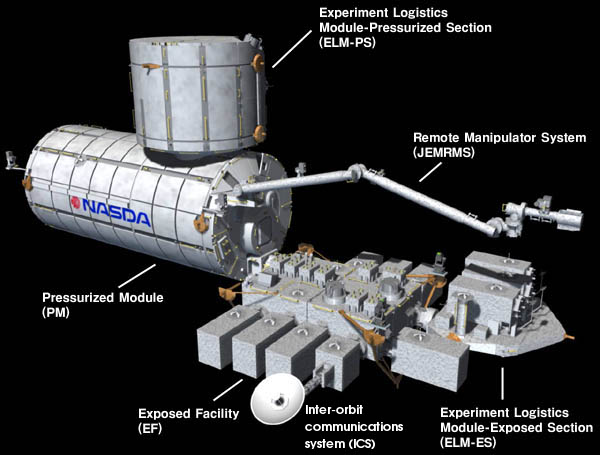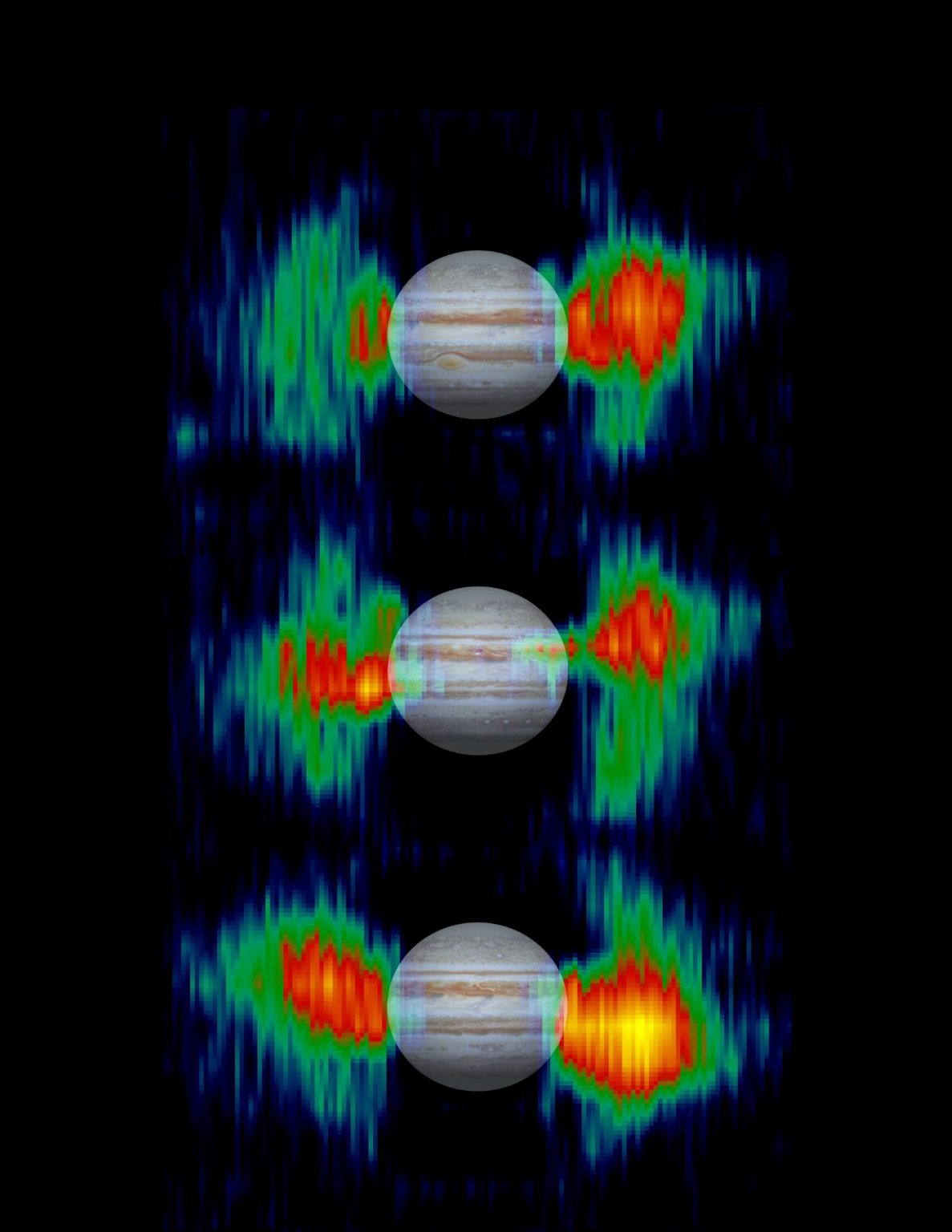|
Arase (satellite)
Arase, formerly known as Exploration of energization and Radiation in Geospace (ERG), is a scientific satellite to study the Van Allen belts. It was developed by the Institute of Space and Astronautical Science of JAXA. While there was a scientist working on a similar project with the surname Arase, the satellite's name has nothing to do with him but instead named after a river beside the launch point. It was launched aboard Epsilon launch vehicle at 11:00:00, 20 December 2016 UTC into apogee height 32250 km, perigee 214 km orbit. Subsequent perigee-up operation moved its orbit to apogee 32110 km, perigee 460 km of 565 minutes period. Spacecraft The Arase spacecraft is the second satellite based on SPRINT bus, after Hisaki (SPRINT-A). Arase weighs about 350 kg, measures about 1.5 m × 1.5 m × 2.7 m at launch. Once in orbit, it will extend four solar panels, two 5 m masts, and four 15 m wire antennas. The spacecraft is spin-stabilized at 7. ... [...More Info...] [...Related Items...] OR: [Wikipedia] [Google] [Baidu] |
JAXA
The is the Japanese national air and space agency. Through the merger of three previously independent organizations, JAXA was formed on 1 October 2003. JAXA is responsible for research, technology development and launch of satellites into orbit, and is involved in many more advanced missions such as asteroid exploration and possible human exploration of the Moon. Its motto is ''One JAXA'' and its corporate slogan is ''Explore to Realize'' (formerly ''Reaching for the skies, exploring space''). History On 1 October 2003, three organizations were merged to form the new JAXA: Japan's Institute of Space and Astronautical Science (ISAS), the National Aerospace Laboratory of Japan (NAL), and National Space Development Agency of Japan (NASDA). JAXA was formed as an Independent Administrative Institution administered by the Ministry of Education, Culture, Sports, Science and Technology (MEXT) and the Ministry of Internal Affairs and Communications (MIC). Before the mer ... [...More Info...] [...Related Items...] OR: [Wikipedia] [Google] [Baidu] |
Epsilon (rocket)
The Epsilon Launch Vehicle, or (formerly Advanced Solid Rocket), is a Japanese solid-fuel rocket designed to launch scientific satellites. It is a follow-on project to the larger and more expensive M-V rocket which was retired in 2006. The Japan Aerospace Exploration Agency (JAXA) began developing the Epsilon in 2007. It is capable of placing a 590 kg payload into Sun-synchronous orbit. Vehicle description The development aim is to reduce the US$70 million launch cost of an M-V; the Epsilon costs US$38 million per launch. Development expenditures by JAXA exceeded US$200 million. To reduce the cost per launch the Epsilon uses the existing SRB-A3, a solid rocket booster on the H-IIA rocket, as its first stage. Existing M-V upper stages will be used for the second and third stages, with an optional fourth stage available for launches to higher orbits. The J-I rocket, which was developed during the 1990s but abandoned after just one launch, used a similar design concept, ... [...More Info...] [...Related Items...] OR: [Wikipedia] [Google] [Baidu] |
Uchinoura Space Center
The is a space launch facility in the Japanese town of Kimotsuki, Kagoshima Prefecture. Before the establishment of the JAXA space agency in 2003, it was simply called the (KSC). All of Japan's scientific satellites were launched from Uchinoura prior to the M-V launch vehicles being decommissioned in 2006. It continues to be used for suborbital launches, stratospheric balloons and has also been used for the Epsilon orbital launch vehicle. Additionally, the center has antennas for communication with interplanetary space probes. History Established in February 1962, the Kagoshima Space Center (KSC) was constructed on the Pacific coast of Kagoshima Prefecture in Uchinoura (now part of Kimotsuki) for the purpose of launching large rockets with probe payloads. Prior to establishment of KSC, test launches of the Pencil Rocket, Baby Rocket and Kappa Rocket had been performed at the pioneering Akita rocket test facility ( Michikawa) from the mid-1950s to the 1960s. However, pro ... [...More Info...] [...Related Items...] OR: [Wikipedia] [Google] [Baidu] |
Geocentric Orbit
A geocentric orbit, Earth-centered orbit, or Earth orbit involves any object orbiting Earth, such as the Moon or artificial satellites. In 1997, NASA estimated there were approximately 2,465 artificial satellite payloads orbiting Earth and 6,216 pieces of space debris as tracked by the Goddard Space Flight Center. More than 16,291 objects previously launched have undergone orbital decay and entered Earth's atmosphere. A spacecraft enters orbit when its centripetal acceleration due to gravity is less than or equal to the centrifugal acceleration due to the horizontal component of its velocity. For a low Earth orbit, this velocity is about ; by contrast, the fastest crewed airplane speed ever achieved (excluding speeds achieved by deorbiting spacecraft) was in 1967 by the North American X-15. The energy required to reach Earth orbital velocity at an altitude of is about 36 MJ/kg, which is six times the energy needed merely to climb to the corresponding altitude. Spa ... [...More Info...] [...Related Items...] OR: [Wikipedia] [Google] [Baidu] |
Satellite
A satellite or an artificial satellite is an object, typically a spacecraft, placed into orbit around a celestial body. They have a variety of uses, including communication relay, weather forecasting, navigation ( GPS), broadcasting, scientific research, and Earth observation. Additional military uses are reconnaissance, early warning, signals intelligence and, potentially, weapon delivery. Other satellites include the final rocket stages that place satellites in orbit and formerly useful satellites that later become defunct. Except for passive satellites, most satellites have an electricity generation system for equipment on board, such as solar panels or radioisotope thermoelectric generators (RTGs). Most satellites also have a method of communication to ground stations, called transponders. Many satellites use a standardized bus to save cost and work, the most popular of which are small CubeSats. Similar satellites can work together as groups, forming constellatio ... [...More Info...] [...Related Items...] OR: [Wikipedia] [Google] [Baidu] |
Van Allen Belt
The Van Allen radiation belt is a zone of energetic charged particles, most of which originate from the solar wind, that are captured by and held around a planet by that planet's magnetosphere. Earth has two such belts, and sometimes others may be temporarily created. The belts are named after James Van Allen, who published an article describing the belts in 1958. Earth's two main belts extend from an altitude of about above the surface, in which region radiation levels vary. The belts are in the inner region of Earth's magnetic field. They trap energetic electrons and protons. Other nuclei, such as alpha particles, are less prevalent. Most of the particles that form the belts are thought to come from the solar wind while others arrive as cosmic rays. By trapping the solar wind, the magnetic field deflects those energetic particles and protects the atmosphere from destruction. The belts endanger satellites, which must have their sensitive components protected with adequat ... [...More Info...] [...Related Items...] OR: [Wikipedia] [Google] [Baidu] |
Institute Of Space And Astronautical Science
, or ISAS, is a Japanese national research organization of astrophysics using rockets, astronomical satellites and interplanetary probes which played a major role in Japan's space development. Established as part of the University of Tokyo in 1964, the institute spun off from the university to come under direct purview of the Ministry of Education. Since 2003, it is a division of Japan Aerospace Exploration Agency (JAXA). History The ISAS originated as part of the Institute of Industrial Science of the University of Tokyo, where Hideo Itokawa experimented with miniature solid-fuel rockets ( Pencil Rocket and ) in the 1950s. This experimentation eventually led to the development of the Κ (''Kappa'') sounding rocket, which was used for observations during the International Geophysical Year (IGY). By 1960, the Κ-8 rocket had reached an altitude of 200 km. In 1964, the rocket group and the ''Institute of Aeronautics'', along with scientific ballooning team, were ... [...More Info...] [...Related Items...] OR: [Wikipedia] [Google] [Baidu] |
Hisaki (satellite)
Hisaki, also known as the Spectroscopic Planet Observatory for Recognition of Interaction of Atmosphere (SPRINT-A) was a Japanese ultraviolet astronomy satellite operated by the Japan Aerospace Exploration Agency (JAXA). The first mission of the Small Scientific Satellite program, it was launched in September 2013 on the maiden flight of the Epsilon rocket. It was used for extreme ultraviolet observations of the Solar System planets. Hisaki was decommissioned by deactivation on 8 December 2023. Launch and naming Hisaki was launched with an Epsilon rocket, which was its first flight. The four-stage Epsilon rocket flew from the Mu rocket launch complex at the Uchinoura Space Center. The launch occurred at 05:00 UTC on 14 September 2013, following a scrubbed launch attempt on 27 August 2013. Following its successful insertion into orbit and deployment of its solar arrays, the satellite was renamed ''Hisaki'', having been designated SPRINT-A until that point. Hisaki was named aft ... [...More Info...] [...Related Items...] OR: [Wikipedia] [Google] [Baidu] |
Akebono (satellite)
Akebono (known as EXOS-D before launch) is a satellite to study aurora and Earth's magnetosphere In astronomy and planetary science, a magnetosphere is a region of space surrounding an astronomical object in which charged particles are affected by that object's magnetic field. It is created by a celestial body with an active interior Dynamo ... environment. It was developed by Institute of Space and Astronautical Science and launched by M-3SII rocket on February 21, 1989. After 26 years of successful observation, operation was terminated on April 23, 2015, due to the degradation of solar cells and the decay of orbit. See also * International Solar-Terrestrial Physics Science Initiative Notes External links * https://web.archive.org/web/20061023123528/http://www.isas.jaxa.jp/e/enterp/missions/akebono/ Earth observation satellites of Japan Spacecraft launched in 1989 Derelict satellites orbiting Earth {{Japan-spacecraft-stub ... [...More Info...] [...Related Items...] OR: [Wikipedia] [Google] [Baidu] |
Satellites Of Japan
A satellite or an artificial satellite is an object, typically a spacecraft, placed into orbit around a celestial body. They have a variety of uses, including communication relay, weather forecasting, navigation (GPS), broadcasting, scientific research, and Earth observation. Additional military uses are reconnaissance, early warning, signals intelligence and, potentially, weapon delivery. Other satellites include the final rocket stages that place satellites in orbit and formerly useful satellites that later become defunct. Except for passive satellites, most satellites have an electricity generation system for equipment on board, such as solar panels or radioisotope thermoelectric generators (RTGs). Most satellites also have a method of communication to ground stations, called transponders. Many satellites use a standardized bus to save cost and work, the most popular of which are small CubeSats. Similar satellites can work together as groups, forming constellations. Becaus ... [...More Info...] [...Related Items...] OR: [Wikipedia] [Google] [Baidu] |
2016 In Japan
The following lists events that happened during 2016 in Japan. *Year: Heisei 28 Incumbents *Emperor: Akihito *Prime Minister: Shinzō Abe ( L– Yamaguchi) * Chief Cabinet Secretary: Yoshihide Suga (L–Kanagawa) * Chief Justice of the Supreme Court: Itsurō Terada *President of the House of Representatives: Tadamori Oshima (L–Aomori) *President of the House of Councillors: Masaaki Yamazaki (L–Fukui) until July 25, Chūichi Date (L-Hokkaidō) from August 1 *National Diets: 190th (regular session, January 4–June 1), 191st (extraordinary session, August 1–3), 192nd (extraordinary session, September 26–November 30 nless extended or cut short by lower house dissolution Governors *Aichi Prefecture: Hideaki Omura *Akita Prefecture: Norihisa Satake *Aomori Prefecture: Shingo Mimura *Chiba Prefecture: Kensaku Morita *Ehime Prefecture: Tokihiro Nakamura *Fukui Prefecture: Issei Nishikawa *Fukuoka Prefecture: Hiroshi Ogawa *Fukushima Prefecture: Masao Uchibori *Gifu Prefec ... [...More Info...] [...Related Items...] OR: [Wikipedia] [Google] [Baidu] |





